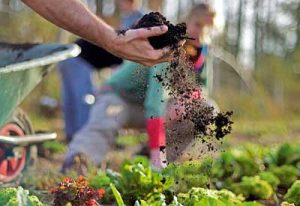- Plant Soil Heath
- 717-299-2112
- info@organicapproach.com
- Organic Approach Website
Garden Soil Preparation
Late Leaf Rust (Disease) Management Tactics for Red Raspberries
April 9, 2018Saline and Sodic Soils
August 30, 2018Garden Soil Preparation

Garden Soil Preparation
No matter what kind of garden you have, or plan to grow, getting the soil right is key to the health and success of any garden. While not all plants will require the same type of soil, it is important to make sure that you have a prepared area to begin with, and you can further tweak the prepared soil to better fit the individual plant’s specific needs as you go.
One of the most important factors to having the right garden soil to work with is drainage. Soil that contains too much sand, or large rocks and pebbles, will drain very quickly and not retain enough water and moisture. On the other hand, soil that is too heavy, or contains too much peat or clay, will retain too much water and will lead to root rot and other diseases that can negatively affect your garden. The best soil mixture is one that stays damp to the touch but is not too muddy or too crumbly to the touch.
If your garden does not have the right soil blend, it is an easy problem to fix. If your soil is too heavy and contains too much clay or peat, you can add perlite or a lighter soil mixture such as topsoil, or for smaller areas, you can mix in potting soil to help and aerate the soil and make it easier to drain and work with. For soils that are too sandy or dry, mixing a compost mixture into the soil will help to allow the soil mixture to retain moisture more easily, resulting in less water runoff through the soil.
Regardless of the area you are working with, or whether you have an established garden or are just starting out, it is important to first begin with ensuring that you have the right soil to work with. Having the right garden soil will allow the roots of your plants to better aerate, and will help with drainage. Good garden soil will also help to produce higher yields and can help to prevent disease amongst your plants, like mildew and root rot.
